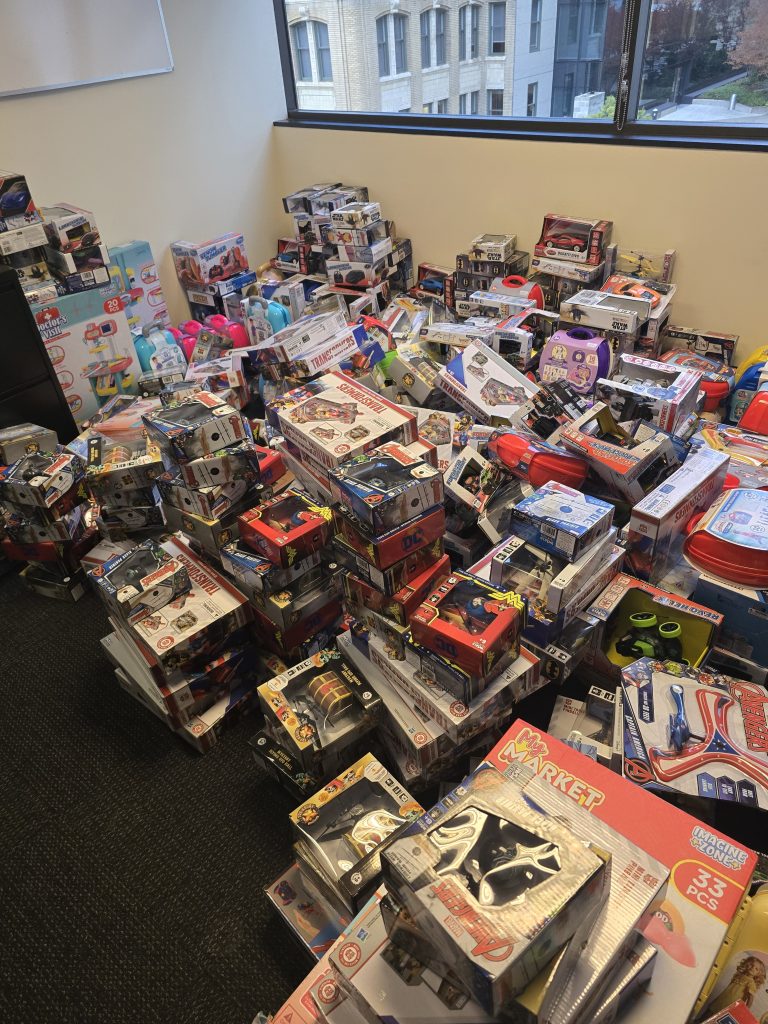Activism
First Black Woman Honored with Lifetime Achievement Award from League of Calif. Cities
Sedalia Sanders has had a lifetime of firsts, pushing boundaries in local politics. As a past president of the California League of Cities, elected in 1995, she was given the President’s Council’s highest honor at the opening of the organization’s three-day conference last Wednesday, at the Long Beach Convention Center.

Solomon O. Smith | California Black Media
For the first time in history, a Black woman, Sedalia Sanders, was honored by the League of California Cities Past Presidents Council with its 2022 Past Presidents Lifetime Achievement Award.
Sanders has had a lifetime of firsts, pushing boundaries in local politics. As a past president of the California League of Cities, elected in 1995, she was given the President’s Council’s highest honor at the opening of the organization’s three-day conference last Wednesday, at the Long Beach Convention Center.
On stage were some of the past winners — but no African Americans. Cheryl Viegas Walker, also a past president of the league, presented the award.

“Today we recognize a true champion of local government,” Viegas Walker said, voice wavering. “One of my dearest friends and mentors who has been not only a champion of local government but a champion of quality-of-life issues, making our cities better places to live, to work to raise our families.”
Sanders delivered her acceptance speech with a combination of wit and humor. Thanking the audience for coming, she asked those who did not come to see her to “refrain from saying so.” Her speech recalled events of the last 80 years of her life and how they contributed to making her “part of the greatest generation.”
Sanders described her accomplishments as those of a “small town gal” from a “rural community” acknowledging the difficult job of governing, particularly with the recent pandemic. She emphasized the importance of a diverse, fair representation in government.
“So those who look like me, meaning of the same gender, those who may look like me, meaning the same ethnicity, and those who may look like me, because you’re my age or more,” said Sanders, “know that if you live long enough, work hard enough, all things can be accomplished.”
In a moment of reflection backstage, Sanders recalled how her political career began. The mayor of El Centro wanted her on the Board of Trustees of El Centro Community Hospital in 1982 but he warned her that she would need to be appointed to the position.
 “This is 20 years after Martin Luther King, Jr. marched on Washington,” said Sanders. “He was killed in ‘63 and people were still worried about whether we (African Americans) have the knowledge, understanding or know-how and education to do this.”
“This is 20 years after Martin Luther King, Jr. marched on Washington,” said Sanders. “He was killed in ‘63 and people were still worried about whether we (African Americans) have the knowledge, understanding or know-how and education to do this.”
But she persisted. Sanders said she won them over with her willingness to work hard and her tenacity. She went on to win, and defend a seat as a city councilwoman, and later mayor of El Centro, in Southern California from 1984 to 1999.
Leaders that were inspirational to Sanders at the time included former Los Angeles mayor, Tom Bradley. She remembers meeting him and being asked how she was able to do it. She answered. “it wasn’t easy,” to which Bradley responded, “tell me about it.”
Bradley was the first African American to win the Lifetime Achievement Award.
Sanders has achieved a long list of accomplishments and received several awards over 30 years in California politics. She has been mayor of El Centro, the president of the League of California Cities, a two-year member of the Board of Directors of the National League of Cities, a member of the Taskforce on Rural Competitiveness appointed by Gov. Pete Wilson, and the Vice-Chair of the Rural Development Council.
Hard work and faith were what Sanders says got her through some of the most contentious parts of her political career. Now in her eighties, she is not done yet. She has been reappointed by Gov. Newsom to the Executive Committee of the California Commission on Aging, where she has been serving since 2016.
For Sanders, the message is clear — no one should be told they are not as good as someone else. Everyone should be able to participate in the governing process.
“What I’m hopeful for is that the presentation I made today in my acceptance speech will inspire someone so that they can see that they can do this.”
Activism
Oakland Post: Week of December 24 – 30, 2025
The printed Weekly Edition of the Oakland Post: Week of – December 24 – 30, 2025

To enlarge your view of this issue, use the slider, magnifying glass icon or full page icon in the lower right corner of the browser window.
Activism
Lu Lu’s House is Not Just Toying Around with the Community
Wilson and Lambert will be partnering with Mayor Barbara Lee on a toy giveaway on Dec. 20. Young people, like Dremont Wilkes, age 15, will help give away toys and encourage young people to stay in school and out of trouble. Wilkes wants to go to college and become a specialist in financial aid. Sports agent Aaron Goodwin has committed to giving all eight young people from Lu Lu’s House a fully paid free ride to college, provided they keep a 3.0 grade point average and continue the program. Lu Lu’s House is not toying around.

Special to the Post
Lu Lu’s House is a 501c3 organization based in Oakland, founded by Mr. Zirl Wilson and Mr. Tracy Lambert, both previously incarcerated. After their release from jail, they wanted to change things for the better in the community — and wow, have they done that!
The duo developed housing for previously incarcerated people, calling it “Lu Lu’s House,” after Wilson’s wonderful wife. At a time when many young people were robbing, looting, and involved in shootings, Wilson and Lambert took it upon themselves to risk their lives to engage young gang members and teach them about nonviolence, safety, cleanliness, business, education, and the importance of health and longevity.
Lambert sold hats and T-shirts at the Eastmont Mall and was visited by his friend Wilson. At the mall, they witnessed gangs of young people running into the stores, stealing whatever they could get their hands on and then rushing out. Wilson tried to stop them after numerous robberies and finally called the police, who Wilson said, “did not respond.” Having been incarcerated previously, they realized that if the young people were allowed to continue to rob the stores, they could receive multiple criminal counts, which would take their case from misdemeanors to felonies, resulting in incarceration.

Lu Lu’s House traveled to Los Angeles and obtained more than 500 toys
for a Dec. 20 giveaway in partnership with Oakland Mayor Barbara
Lee. Courtesy Oakland Private Industry,
Wilson took it upon himself to follow the young people home and when he arrived at their subsidized homes, he realized the importance of trying to save the young people from violence, drug addiction, lack of self-worth, and incarceration — as well as their families from losing subsidized housing. Lambert and Wilson explained to the young men and women, ages 13-17, that there were positive options which might allow them to make money legally and stay out of jail. Wilson and Lambert decided to teach them how to wash cars and they opened a car wash in East Oakland. Oakland’s Initiative, “Keep the town clean,” involved the young people from Lu Lu’s House participating in more than eight cleanup sessions throughout Oakland. To assist with their infrastructure, Lu Lu’s House has partnered with Oakland’s Private Industry Council.
For the Christmas season, Lu Lu’s House and reformed young people (who were previously robbed) will continue to give back.
Lu Lu’s House traveled to Los Angeles and obtained more than 500 toys.
Wilson and Lambert will be partnering with Mayor Barbara Lee on a toy giveaway on Dec. 20. Young people, like Dremont Wilkes, age 15, will help give away toys and encourage young people to stay in school and out of trouble. Wilkes wants to go to college and become a specialist in financial aid. Sports agent Aaron Goodwin has committed to giving all eight young people from Lu Lu’s House a fully paid free ride to college, provided they keep a 3.0 grade point average and continue the program. Lu Lu’s House is not toying around.
Activism
Desmond Gumbs — Visionary Founder, Mentor, and Builder of Opportunity
Gumbs’ coaching and leadership journey spans from Bishop O’Dowd High School, Oakland High School, Stellar Prep High School. Over the decades, hundreds of his students have gone on to college, earning academic and athletic scholarships and developing life skills that extend well beyond sports.

Special to the Post
For more than 25 years, Desmond Gumbs has been a cornerstone of Bay Area education and athletics — not simply as a coach, but as a mentor, founder, and architect of opportunity. While recent media narratives have focused narrowly on challenges, they fail to capture the far more important truth: Gumbs’ life’s work has been dedicated to building pathways to college, character, and long-term success for hundreds of young people.
A Career Defined by Impact
Gumbs’ coaching and leadership journey spans from Bishop O’Dowd High School, Oakland High School, Stellar Prep High School. Over the decades, hundreds of his students have gone on to college, earning academic and athletic scholarships and developing life skills that extend well beyond sports.
One of his most enduring contributions is his role as founder of Stellar Prep High School, a non-traditional, mission-driven institution created to serve students who needed additional structure, belief, and opportunity. Through Stellar Prep numerous students have advanced to college — many with scholarships — demonstrating Gumbs’ deep commitment to education as the foundation for athletic and personal success.

NCAA football history was made this year when Head Coach from
Mississippi Valley State, Terrell Buckley and Head Coach Desmond
Gumbs both had starting kickers that were women. This picture was
taken after the game.
A Personal Testament to the Mission: Addison Gumbs
Perhaps no example better reflects Desmond Gumbs’ philosophy than the journey of his son, Addison Gumbs. Addison became an Army All-American, one of the highest honors in high school football — and notably, the last Army All-Americans produced by the Bay Area, alongside Najee Harris.
Both young men went on to compete at the highest levels of college football — Addison Gumbs at the University of Oklahoma, and Najee Harris at the University of Alabama — representing the Bay Area on a national level.
Building Lincoln University Athletics From the Ground Up
In 2021, Gumbs accepted one of the most difficult challenges in college athletics: launching an entire athletics department at Lincoln University in Oakland from scratch. With no established infrastructure, limited facilities, and eventually the loss of key financial aid resources, he nonetheless built opportunities where none existed.
Under his leadership, Lincoln University introduced:
- Football
- Men’s and Women’s Basketball
- Men’s and Women’s Soccer
Operating as an independent program with no capital and no conference safety net, Gumbs was forced to innovate — finding ways to sustain teams, schedule competition, and keep student-athletes enrolled and progressing toward degrees. The work was never about comfort; it was about access.
Voices That Reflect His Impact
Desmond Gumbs’ philosophy has been consistently reflected in his own published words:
- “if you have an idea, you’re 75% there the remaining 25% is actually doing it.”
- “This generation doesn’t respect the title — they respect the person.”
- “Greatness is a habit, not a moment.”
Former players and community members have echoed similar sentiments in public commentary, crediting Gumbs with teaching them leadership, accountability, confidence, and belief in themselves — lessons that outlast any single season.
Context Matters More Than Headlines
Recent articles critical of Lincoln University athletics focus on logistical and financial hardships while ignoring the reality of building a new program with limited resources in one of the most expensive regions in the country. Such narratives are ultimately harmful and incomplete, failing to recognize the courage it takes to create opportunity instead of walking away when conditions are difficult.
The real story is not about early struggles — it is about vision, resilience, and service.
A Legacy That Endures
From founding Stellar PREP High School, to sending hundreds of students to college, to producing elite athletes like Addison Gumbs, to launching Lincoln University athletics, Desmond Gumbs’ legacy is one of belief in young people and relentless commitment to opportunity.
His work cannot be reduced to headlines or records. It lives on in degrees earned, scholarships secured, leaders developed, and futures changed — across the Bay Area and beyond.
-

 #NNPA BlackPress4 weeks ago
#NNPA BlackPress4 weeks agoLIHEAP Funds Released After Weeks of Delay as States and the District Rush to Protect Households from the Cold
-

 Alameda County4 weeks ago
Alameda County4 weeks agoSeth Curry Makes Impressive Debut with the Golden State Warriors
-

 #NNPA BlackPress4 weeks ago
#NNPA BlackPress4 weeks agoSeven Steps to Help Your Child Build Meaningful Connections
-

 #NNPA BlackPress4 weeks ago
#NNPA BlackPress4 weeks agoSeven Steps to Help Your Child Build Meaningful Connections
-

 #NNPA BlackPress4 weeks ago
#NNPA BlackPress4 weeks agoTrinidad and Tobago – Prime Minister Confirms U.S. Marines Working on Tobago Radar System
-

 #NNPA BlackPress4 weeks ago
#NNPA BlackPress4 weeks agoThanksgiving Celebrated Across the Tri-State
-

 #NNPA BlackPress4 weeks ago
#NNPA BlackPress4 weeks agoTeens Reject Today’s News as Trump Intensifies His Assault on the Press
-

 #NNPA BlackPress4 weeks ago
#NNPA BlackPress4 weeks agoBreaking the Silence: Black Veterans Speak Out on PTSD and the Path to Recovery



















































